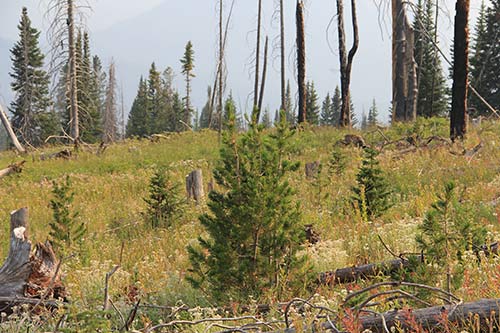It’s National Invasive Species Awareness Week, and here at American Forests, we’re all-too-aware of the havoc that invasive species can wreak on our native ecosystems.

Some invasive species really make a name for themselves. Kudzu, a vine native to Japan and China, grew over trees in parts of America so quickly that it’s been called “the plant that ate the South” and has became a poster child for invasive species.
Other invasives may lack catchy nicknames, but are no less harmful. American Forests has been working to spread awareness of one invasive with a lower profile: the fungus Cronartium ribicola — cause of the deadly white pine blister rust affecting the American West. Mountain pine beetles often take all the credit for the devastation in Western high-elevation forests in recent years, but they haven’t done it alone. Could blister rust one day be known as the fungus that ate the West?

The rust, which arrived from Asia at the turn of the 20th century, moves from its alternate host — usually a plant of the Ribes genus like gooseberry — to a white pine. While the alternate host will shed its leaves in the fall, and the rust along with them, the pine will be facing a slow death. Although it may take years for the tree to die, in the meantime, the disease prevents the tree from dispersing nutrients and water, limiting its production of cones and, consequently, its ability to reproduce.
One of the white pine species susceptible to blister rust is whitebark pine, the sometimes-scraggly, other-worldly, high-elevation pines that are a keystone species in the Mountain West. The death of these pines has cascading effects throughout the ecosystem, from the biggest grizzly bear to the smallest Clark’s nutcracker, both of whom rely on the pine seeds for food. What’s more, without whitebark pine to shade snowpack, snow melts faster and sooner, causing flooding at lower elevations and even affecting the winter outdoor recreation industry.

But there’s hope. About 27 percent of all whitebark pine is naturally resistant to blister rust. American Forests has been working with the Greater Yellowstone Coordinating Committee to plant seedlings of these resistant plants. Generous donations from our supporters enabled the planting of seedlings like those shown at right, as well as our activities testing adult trees for resistance and protecting the cones of resistant trees. But we’re not done yet. Please help us continue to increase our native whitebark pines’ resistance to this ambitious invasive before it devours our Mountain West.